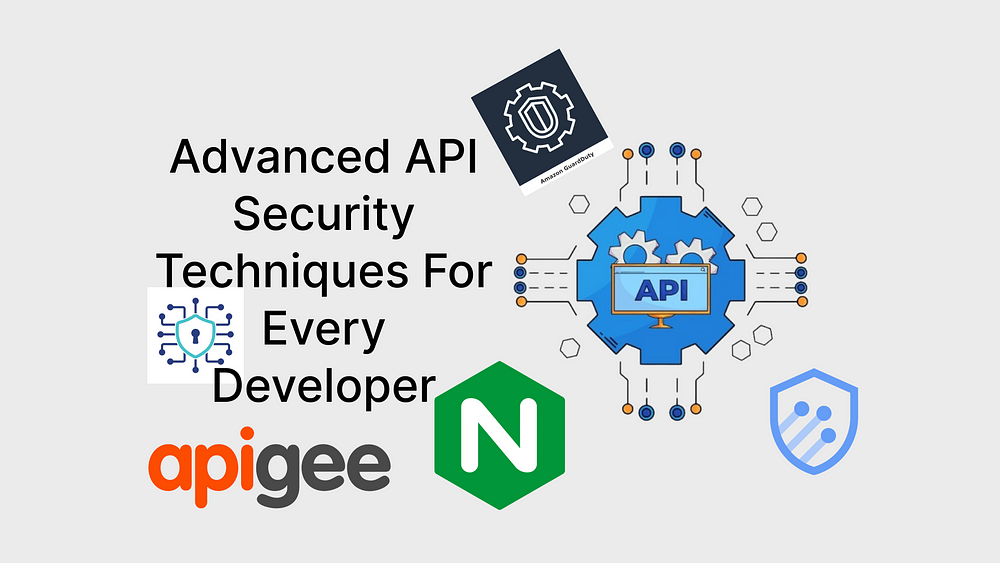Advanced API Security Techniques For Every Developer

As we all know that APIs are powering almost all digital services from mobile apps, web apps, to cloud native architecture. With the rapid development of machine learning, bot frameworks and tools, the attacks on APIs have also increased. In this article, I will show you the advanced techniques to secure your APIs, aiming to help developers and architects build and maintain secure systems.
Modern API Security Challenges
Growing Attacks: Due to the popularity of microservices and event-driven architecture, there is an increase in exposed endpoints. APIs are now consumed across all the applications, like mobile clients, IoT devices internal systems. This is making the system fragmented and difficult to secure.
Abuse of Public APIs: The public APIs, especially those who has a low rate limit or weak authentication, are a target for scraping, data stuffing, and other attacks. GraphQL allows users to retrieve nested data with a single query by bypassing monitoring systems.
Automated Attacks using AI and LLMs: As we all know that AI and Machine learning have gained a lot of exposure nowadays, and this opens the gate for AI simulators to send human-like traffic without any pattern. The tools can now generate valid payloads and test permission boundaries programmatically.
Techniques to secure apis:-
1. Zero Trust API Architecture
This means we have to treat each request as potentially hostile, regardless of its origin. The requests must be authenticated with short-lived, scoped tokens with device identity. We can use tools like Google Identity-Aware or Cloudflare Access that can intercept the requests before they reach the backend.
2. API Threat Detection with AI/ML
Machine Learning models can use the historical pattern of API usage and detect the deviations, frequency, and payloads to detect potential attacks. We can assign the risk score to each api request based on the IP reputation, Location, and request depth, which can help in adaptive detection.
We can also use third-party tools like AWS GuardDuty and GCP Armor, which use ML to predict attacks based on historical data.
There are some limitations with Machine learning to predict attacks, it can also block legitimate requests. Hence, combining human observation with AI and machine learning can be the best combination
3. Secure Authentication and Authorization
OPA for Fine-Grained Control: The Open Policy Agent enables the runtime detection of access policies written in Rego. It allows developers to create the rules that judge user roles, time, context, and payload content.
OAuth 2.1: OAuth 2.1 provides the best practices for secure auth that were optional on OAuth 2.0 like such as denying the implicit flow and mandating secure redirects.
Mutual TLS (mTLS): This ensures that both client and server authenticate each other using the X.509 certificates rather than just using the server's side authentication, while for client usage, standard TLS.
JWT Best Practices: JWT offers stateless authentication, which can be dangerous if we use very long-lived, unscoped keys. To avoid them, we can use key rotation and a token revocation strategy.
4. API Security Testing and Validation
Automated Scanners: We have tools like OWASP ZAP, 42Crunch, and Burp Suite Enterprise Edition, which can scan the Open API specs and live endpoints for any known issue.
Automation with AI: We can use the AI to generate the structure, malicious inputs, and train on real-world stack payloads. This can help us to test and uncover the hidden vulnerabilities.
5. Advanced Rate Limiting and Abuse Prevention
Instead of using the fixed rate limits for APIs, we can apply rule-based limits, like based on user role, IP, user agents, or transaction type. CAPTCHA is also a growing technology to prevent unwanted requests from bots or automated systems.
Gateways like Envoy, NGINX, or Apigee now support the programmable plugins, which can be helpful to limit the requests based on various aspects like role-based, location-based based or content-based.
6. Monitoring, Logging, and Incident Response
The best way is keep your system running is to keep it monitored.
We can use the standard, readable logs to find the abnormalities within the system. Utilize the SIEMs or cloud monitoring platforms to trigger alerts on anomaly detection, spikes in error rates, or unusual access patterns. Logs are also helpful for Post-incident analysis to find out what went wrong and how we can improve it in the future.
Conclusion
The security for any application is the most important thing to make it reliable. The API security requires the combination of multiple techniques, we can not rely on a single thing. As the APIs are becoming the center of the application, it makes it more important to create secure endpoints.



